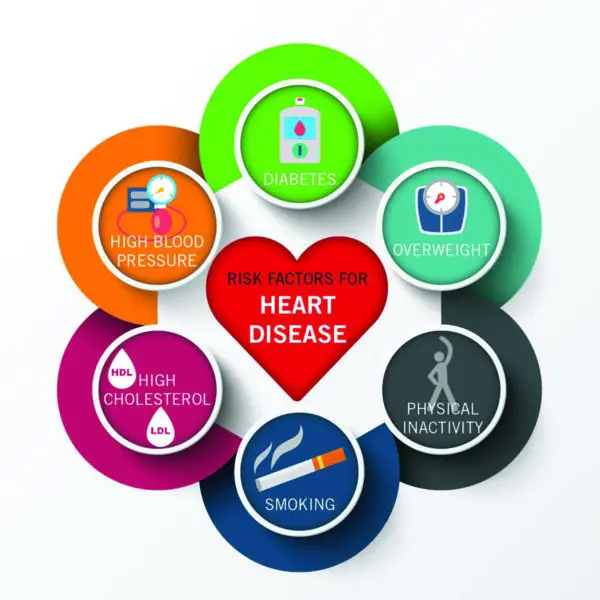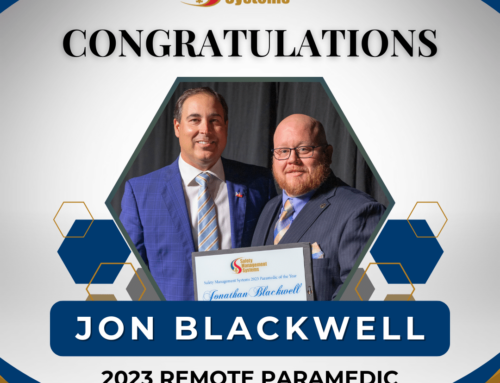By Christopher Johnson, MSS, CBES, Acadian Companies Wellness Manager
The Centers for Disease Control (CDC) lists the leading cause of death for both men and women in the United States as heart disease. It is also one of the easiest to control by managing risk factors and lifestyle behaviors. (insert image)
The top six risk factors for heart disease are:
- High blood pressure
- Diabetes
- Smoking
- Being overweight
- High cholesterol
- Physical inactivity
However, many of these risks can be avoided with a few lifestyle changes. These tips address the modifiable risk factors for reducing heart disease:
1. Grocery shop for your healthy eating plan –
What goes in the cart is what you eat at home. The person buying groceries has a huge impact on the health of the family. There is plenty of controversy and debate in the nutrition arena. The American Heart Association recommends following the Mediterranean diet and D.A.S.H. diet, focus on lowering blood pressure. More info is available at dashdiet.org.
2. Lower added sugar intake –
Excess sugar intake drives so many negative processes, it deserves a special recommendation outside of regular healthy eating. The AHA recommends that men eat a max of about 37 grams and women less than 25 grams of added sugar a day. Use nutrition labels to target items with lower sugar when possible. These grams are easy to count when eating packaged goods, but some of the biggest culprits of added sugar are sodas (almost 40g in a 12oz can), candy, baked goods, fruit juices and low-fat yogurt, which can contain up to 47 grams of sugar.
3. Avoid highly processed foods and read labels –
It would be great to shop at a farmer’s market every day and eat nothing but fresh, local foods. But for workers out on a rig or remote worksite, that isn’t possible. Processed food covers a spectrum, from minimal to heavily processed, and they’re not all bad for you. The worst offenders are foods that contain extra sugar, salt, oil and calories. Read the labels and watch out for the long list of additives in the ingredients.
4. Achieve a healthy waist size –
Weight calculators and estimations often set unrealistic expectations and goals. Here are the basics for body mass: if much of your excess body fat is around your waist rather than your hips, it increases your chances for heart disease and type two diabetes. That risk goes up with a waist size greater than 35” for women and 40” for men. Getting your body fat percentage checked is another tool, but follow the guidelines for the method/device being used and make sure to use that same method consistently to improve accuracy.
5. Exercise according to the pros–
According to the American College of Sports Medicine’s guidelines, adults should get at least 150 minutes of moderate-intensity exercise per week. Goals can be met through 30-60 minutes of moderate-intensity exercise five days per week or 20-60 minutes of vigorous-intensity exercise three days per week. Check out Darebee.com for pre-made exercise recommendations that can be done anywhere, without exercise equipment. You have free access to over 1,000 routines.
6. Quit/avoid tobacco–
The national smoking rates for adults has declined to 14% as of 2017, which is great. Unfortunately, that is still 14% too high. It typically takes 7-8 attempts to kick the habit, which is considered one of the hardest to break. Most states provide free resources for smoking cessation, like Louisiana’s quitwithusla.org. Texas has yesquit.org. Check your local options. There are many methods of quitting that have various success rates, but you may have to spend some time seriously considering the pros and cons of each to find one that works for you. Using apps and social support communities can also be very helpful for advice, such as Quitnow!, available on iOS and Android phones.
7. Sleep 7-9 hours each night-
The National Sleep Foundation recommends 7-9 hours of sleep for people ages 26-64. This is a healthy range based on extensive published studies on sleep and health. Certainly, one of the most important tips is to try and stick with a schedule. If you are sacrificing sleep for TV, you end up paying the price physically and mentally by not getting enough recovery and rejuvenation. There are excellent apps such as Sleep Cycle, that can help set your sleep/wake times based on sleep cycles. Some wearables, like an Apple Watch, also have features that can help analyze and fine-tune sleep schedules to provide enough quality deep and REM sleep.
8. Drink in moderation –
“Moderate” alcohol being beneficial to the heart is not a license to overdo it. Moderate consumption is basically one drink per day for women and 1-2 for men. That is one 12 oz. bottle of beer, 5 oz. glass of wine or 1.5 ounces of spirits. However, alcohol can be an absolutely devastating drug that can have a negative impact on your health and relationships. I like the Mayo Clinic’s statement: “If you don’t drink alcohol, don’t start because of potential health benefits. However, if you drink a light to moderate amount and you’re healthy, you can probably continue as long as you drink responsibly.” Be sure to check with your doctor about what’s right for your health and safety. And if you are concerned your drinking habit may be having a negative impact on your health or work, please contact https://www.aa.org/ for a chapter in your area for assistance.
9. Get a flu shot –
Adults who are vaccinated against influenza have a 50% percent reduction in cardiovascular mortality. Studies have shown that there is an association between influenza and a corresponding increase in heart attacks and stroke (CDC). A study featured in the New England Journal of Medicine (2018) stated that you are six times more likely to have a heart attack during the week after being diagnosed with influenza, compared to the year before or after the infection.
10 Get regular health screenings –
Without the appropriate level and schedule of recommended health screenings, you cannot know your numbers and results. Adults can use the free preventive service recommendations provided on healthfinder.gov. Once you click the “myhealthfinder” link, add your age and gender and hit “Get Results” to see a list of recommendations.
Benefits of regular exercise according to https://www.heart.org:
- Lowers risk of heart disease, stroke, type two diabetes, high blood pressure, dementia and Alzheimer’s, several types of cancer, and some complications of pregnancy
- Better sleep, including improvements in insomnia and obstructive sleep apnea
- Improved cognition, including memory, attention and processing speed
- Less weight gain, obesity and related chronic health conditions
- Better bone health and balance, with less risk of injury from falls
- Fewer symptoms of depression and anxiety
- Better quality of life and sense of overall well-being















